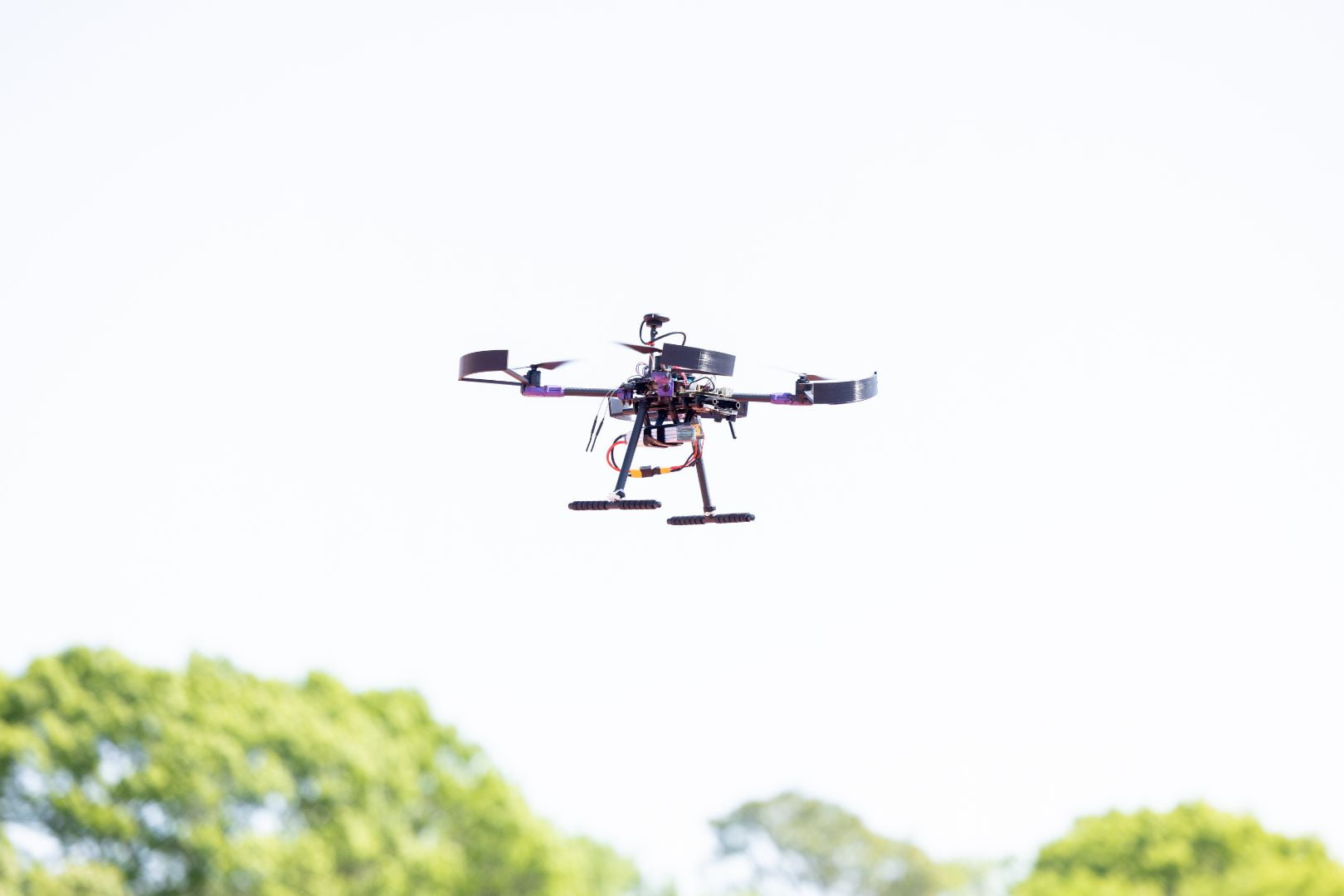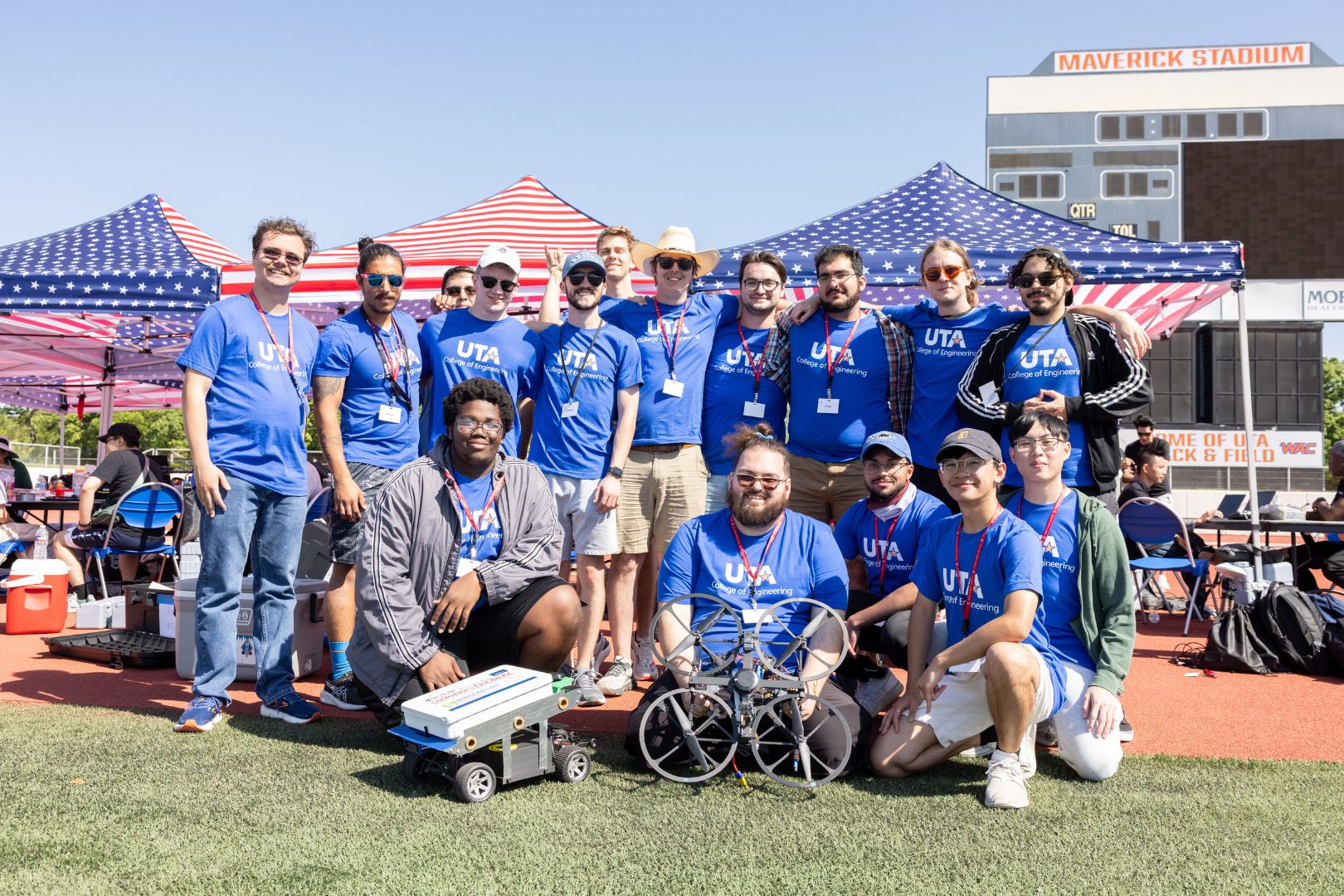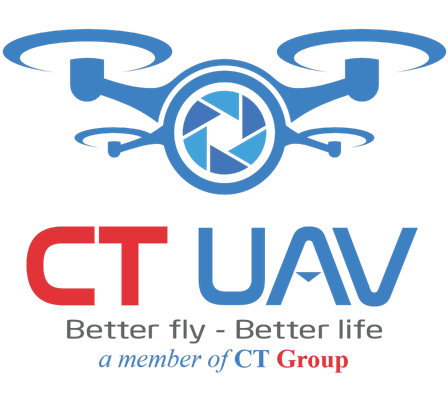This weekend, the University of Texas at Arlington’s Maverick Stadium—normally reserved for high school football games—was transformed into a high-tech aerial arena as engineering students from Texas and the southeastern United States piloted custom-built drones in a competition emphasizing precision and innovation.
The Fifth Annual Autonomous Vehicle Competition, sponsored by Raytheon Technologies, brought together drone teams from universities across Texas, Alabama, and Mississippi. The teams were tasked with designing and operating drones capable of executing complex missions, including obstacle avoidance, target identification, and precise payload delivery.
“This has been an incredible experience, allowing me not only to build and pilot a drone but also to collaborate within a large team to achieve a shared objective,” said Alex Andonov, a senior engineering student at UTA and lead of the electrical engineering team. “I have applied extensive classroom knowledge to real-world challenges through this project.”

The competition consisted of two primary challenges: first, each drone was required to scout the football field to identify the correct payload drop zone; second, it had to accurately deliver its payload to the designated area.
UTA’s drone team secured second place overall, introducing an innovative new drone design focused on both performance and resilience. For the first time, UTA students incorporated carbon plating into the drone frame, resulting in a lightweight, crash-resistant structure that better protects internal components.
“We initiated work on this drone and its novel technologies last August and underwent 13 design iterations before finalizing the current model,” explained Arian Tashakori, a senior mechanical engineering student and a member of the mechanical engineering team. “This is our Mark 14 version.”
For Isaiah Boone, a senior electrical engineering student, collaborating with teammates from different disciplines proved to be an invaluable learning opportunity.
“As an electrical engineering major, I initially knew little about mechanical engineering or computer science,” Boone noted. “However, to make the project a success, I had to acquire knowledge from both fields.”

The UTA drone team comprises 15 students from various departments within the College of Engineering. Dr. David Wetz, professor of electrical engineering and the team’s faculty advisor, emphasized that the competition offers students a distinctive opportunity to tackle real-world engineering challenges within a collaborative, interdisciplinary environment.
“This industry-sponsored competition enables our students to confront engineering problems similar to those they will encounter after graduation,” Dr. Wetz stated. “Given the multidisciplinary nature of the teams, participants must learn to communicate effectively across disciplines and integrate diverse technical requirements.”

